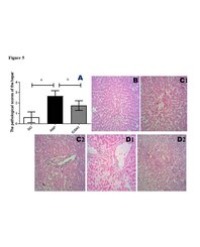Objective: This study investigated the effect of bilateral greater splanchnic nerve (GSN) transection on hepatic injury during acute necrotizing pancreatitis (ANP) in dogs.
Methods: Twenty-four healthy adult beagle dogs were randomly divided into a sham operation group (SO group, n=8), ANP model group (ANP group, n=8), and ANP with bilateral GSN transection group (GSNT group, n=8). ANP was induced by sodium taurocholate and trypsin infusion into the pancreatic duct; dogs in the GSNT group underwent bilateral GSN transection immediately following ANP induction. Serum tumor necrosis factor alpha (TNF-α), interleukin-1β (IL-1β), interleukin-6 (IL-6), pancreatic amylase (AMY), alanine aminotransferase (ALT), and aspartate transaminase (AST) were monitored dynamically. The dogs were sacrificed on day 7 after the operation, pancreatic and hepatic tissues were harvested for pathology, and the expression of p-NF-κB p65 in liver tissues was measured by western blotting.
Results: Serum AMY, TNF-α, IL-1β, IL-6, AST, and ALT levels did not differ significantly between the three groups at 2h before the operation (P>0.05). Serum TNF-α, IL-1β, IL-6, AMY, ALT, and AST levels, pancreatic and hepatic pathological scores, and p-NF-κB p65 expression in liver tissues were significantly higher in the ANP group than in the SO group after the operation (all P<0.05). Serum TNF-α, IL-1β, IL-6, ALT and AST, pancreatic and liver pathological scores, and p-NF-κB p65 protein expression in liver tissues were lower in the GSNT group than in the ANP group after the operation (all P<0.05), whereas serum AMY levels did not differ significantly between these two groups (P>0.05).
Conclusion: Bilateral greater splanchnic nerve transection alleviates liver injury during ANP in dogs.
Jun-Jun Sun1*, Yang Gui2 , Cheng Yang1 , Yan-Hui Yang1 ,
Zhi-Jie Chu1 , Wei-Feng Liu1 , and Tian-Bao Yang1



